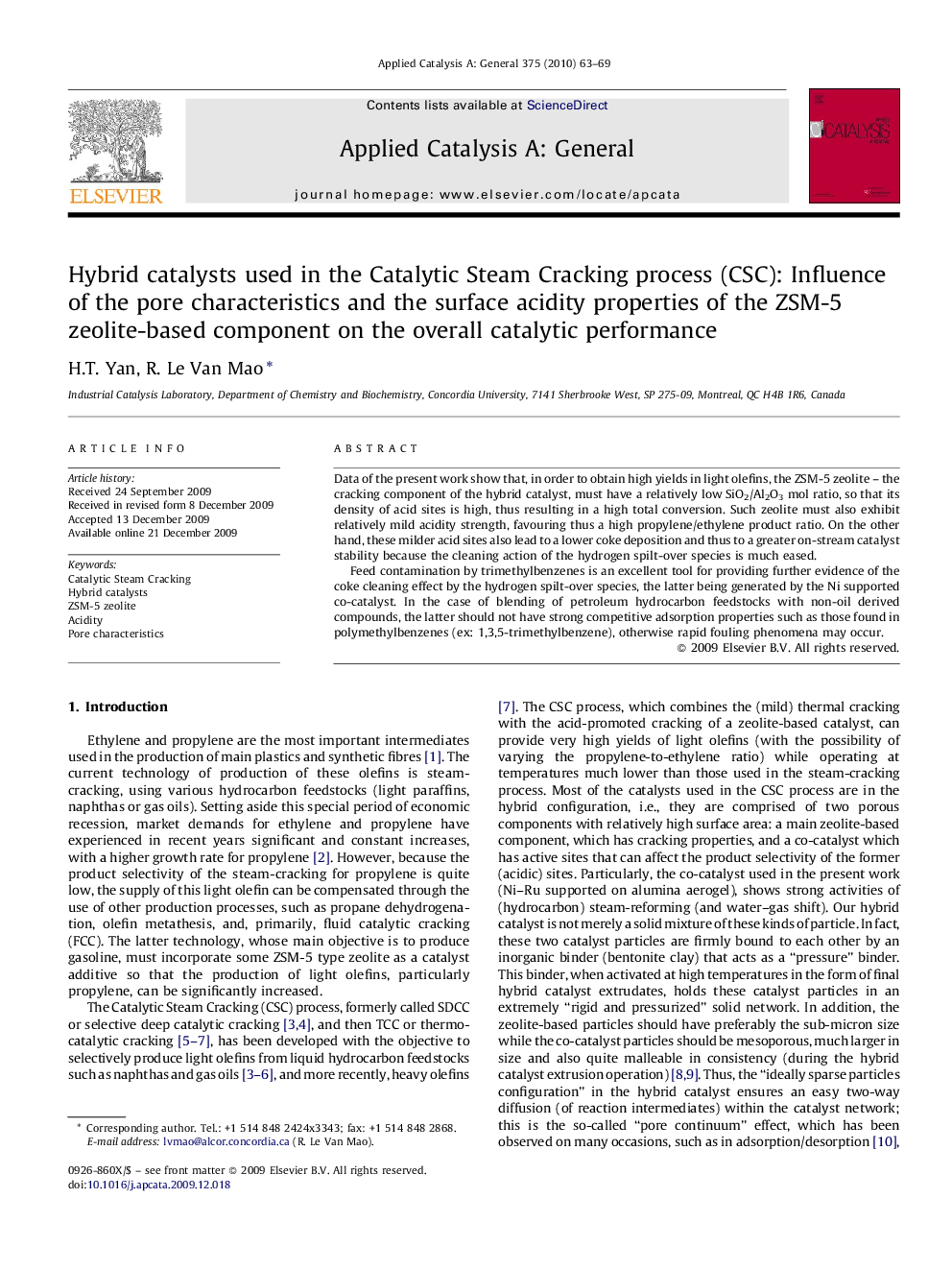| Article ID | Journal | Published Year | Pages | File Type |
|---|---|---|---|---|
| 42111 | Applied Catalysis A: General | 2010 | 7 Pages |
Data of the present work show that, in order to obtain high yields in light olefins, the ZSM-5 zeolite – the cracking component of the hybrid catalyst, must have a relatively low SiO2/Al2O3 mol ratio, so that its density of acid sites is high, thus resulting in a high total conversion. Such zeolite must also exhibit relatively mild acidity strength, favouring thus a high propylene/ethylene product ratio. On the other hand, these milder acid sites also lead to a lower coke deposition and thus to a greater on-stream catalyst stability because the cleaning action of the hydrogen spilt-over species is much eased.Feed contamination by trimethylbenzenes is an excellent tool for providing further evidence of the coke cleaning effect by the hydrogen spilt-over species, the latter being generated by the Ni supported co-catalyst. In the case of blending of petroleum hydrocarbon feedstocks with non-oil derived compounds, the latter should not have strong competitive adsorption properties such as those found in polymethylbenzenes (ex: 1,3,5-trimethylbenzene), otherwise rapid fouling phenomena may occur.
Graphical abstractBoth pore characteristics and surface acidity properties of the ZSM-5 zeolite that bears cracking sites for the hybrid catalyst, have great influence on the total conversion and selectivity into light olefins. Feed contamination by trimethylbenzenes is an excellent tool for providing further evidence of the coke cleaning effect by the hydrogen spilt-over species, the latter being generated by the Ni supported co-catalyst.Figure optionsDownload full-size imageDownload high-quality image (76 K)Download as PowerPoint slide
